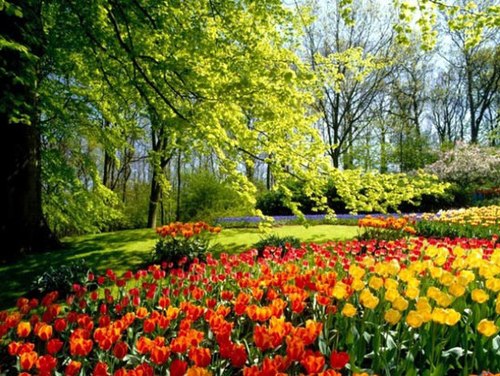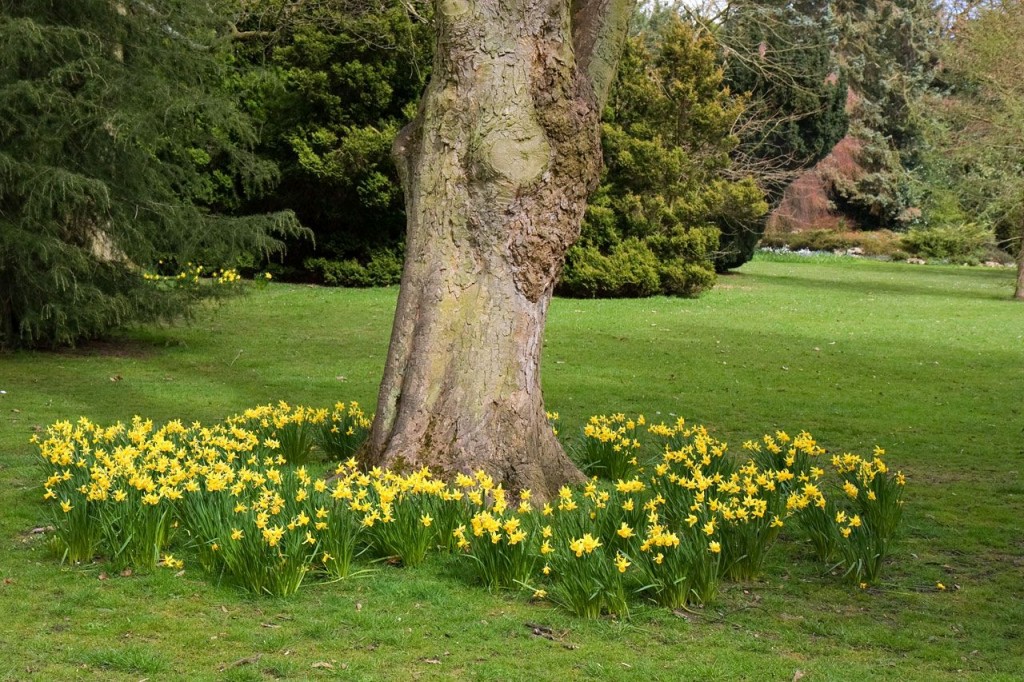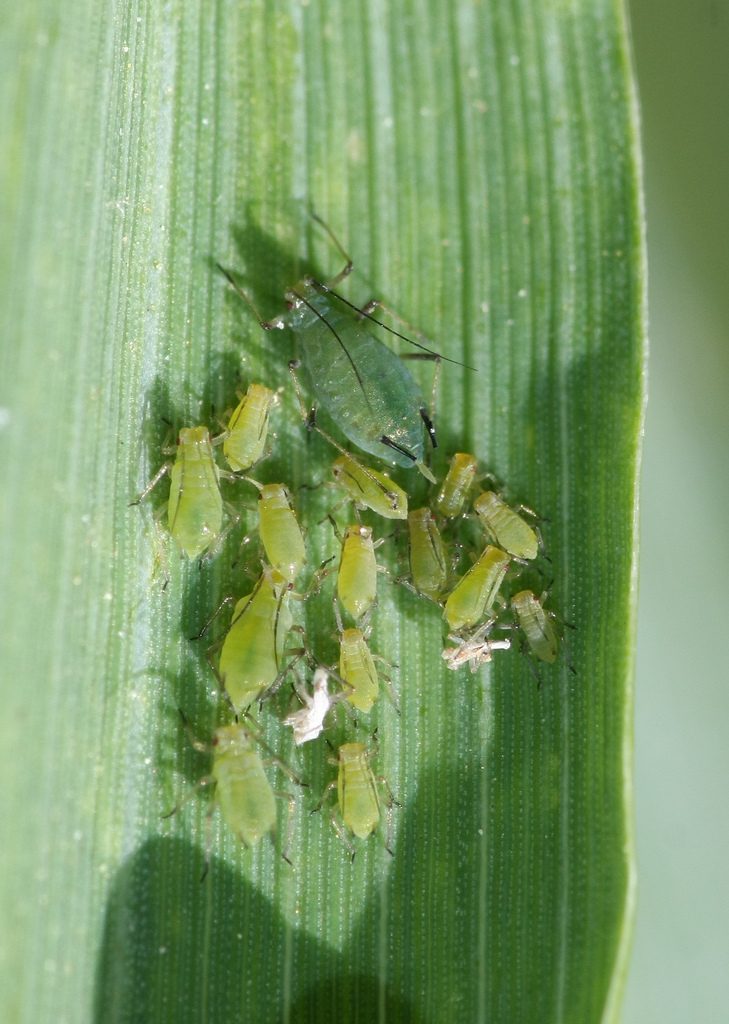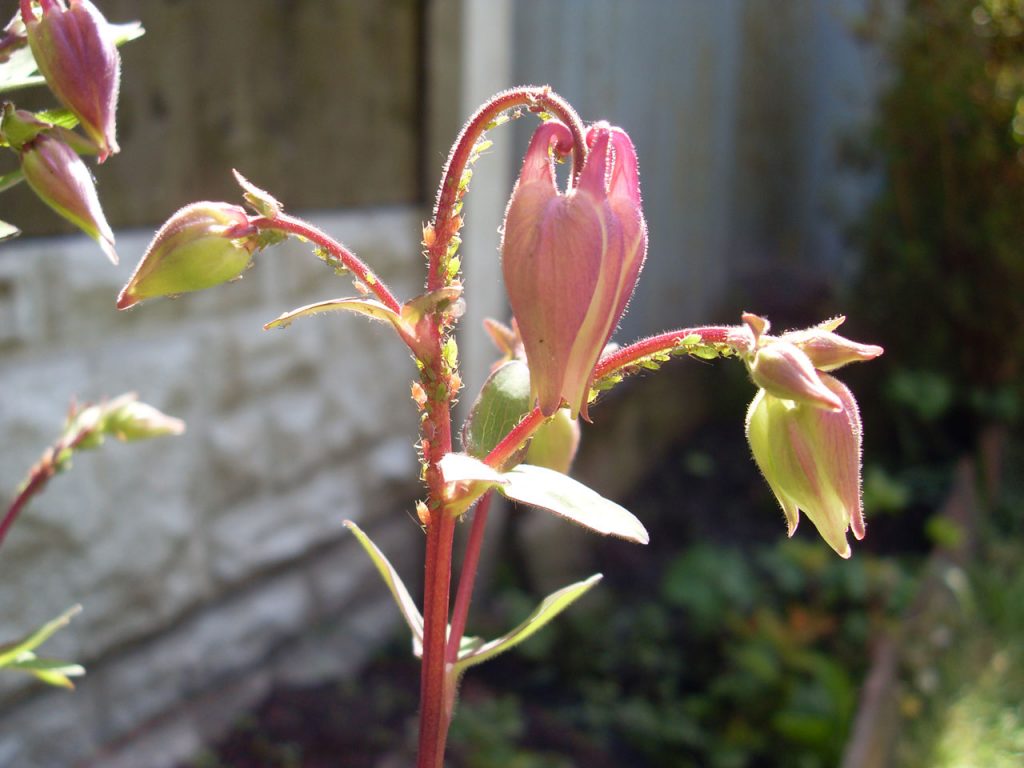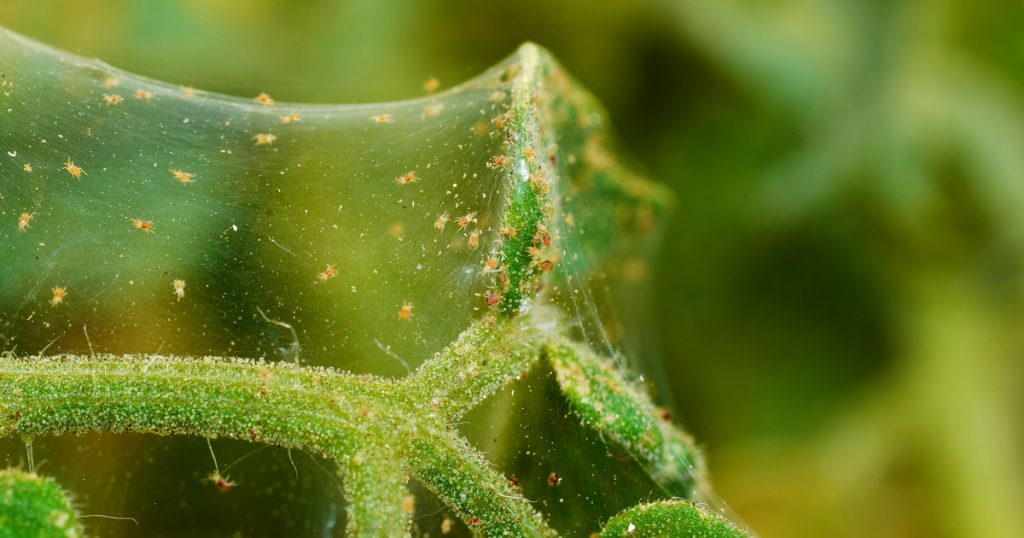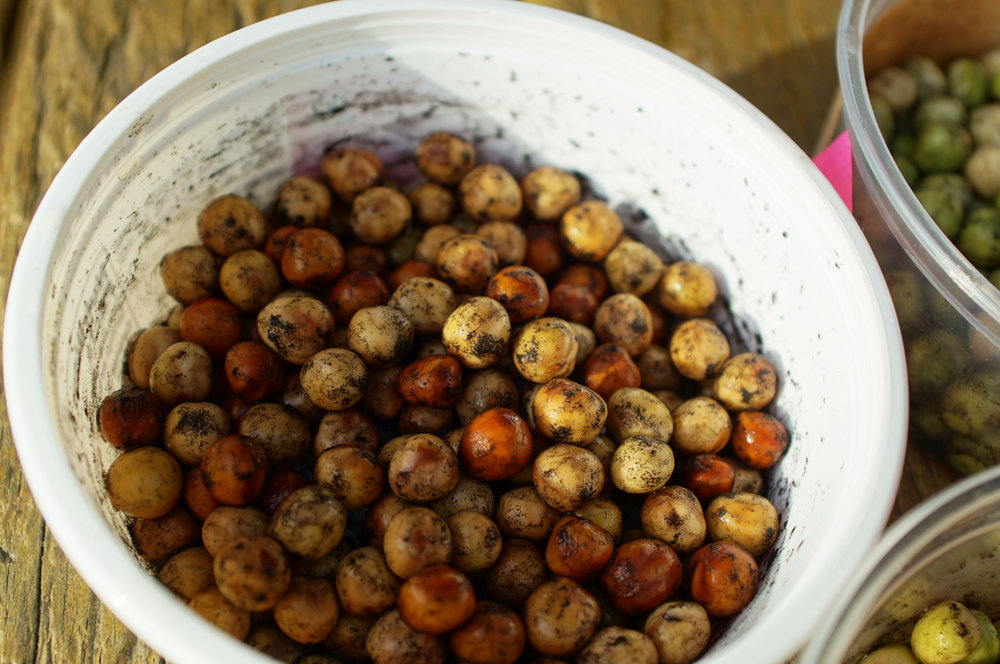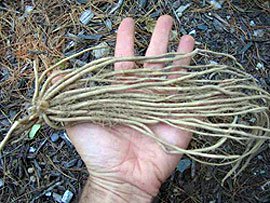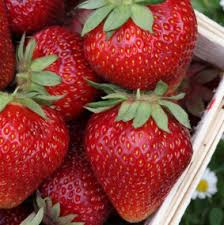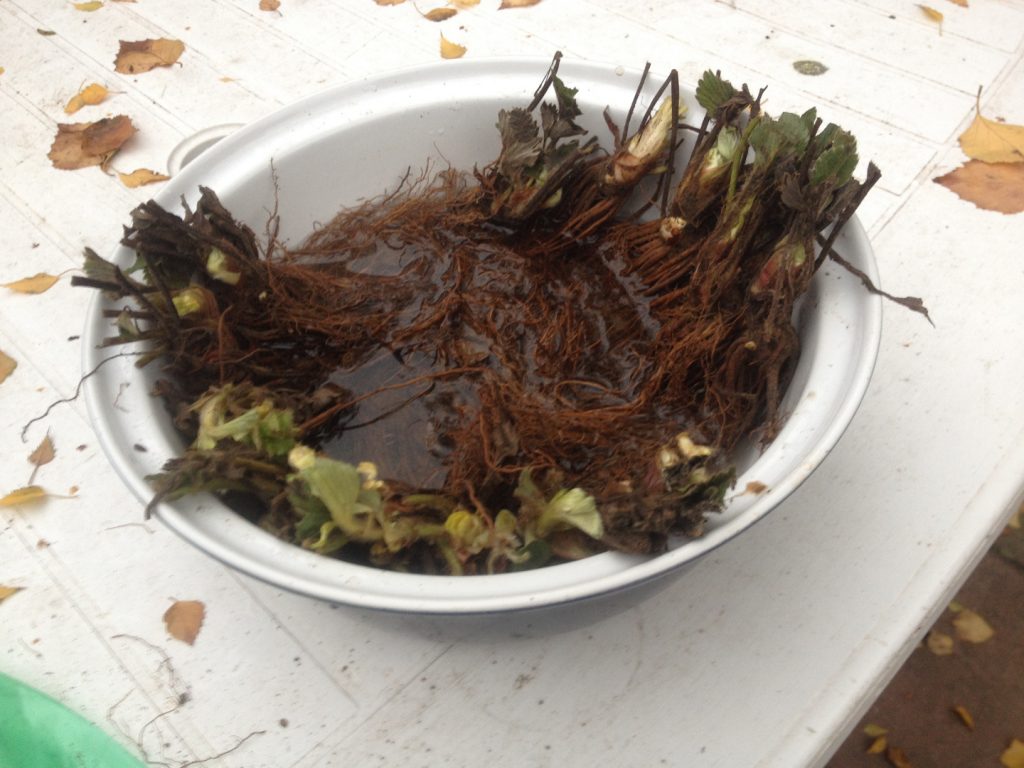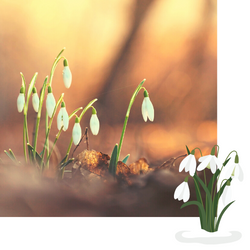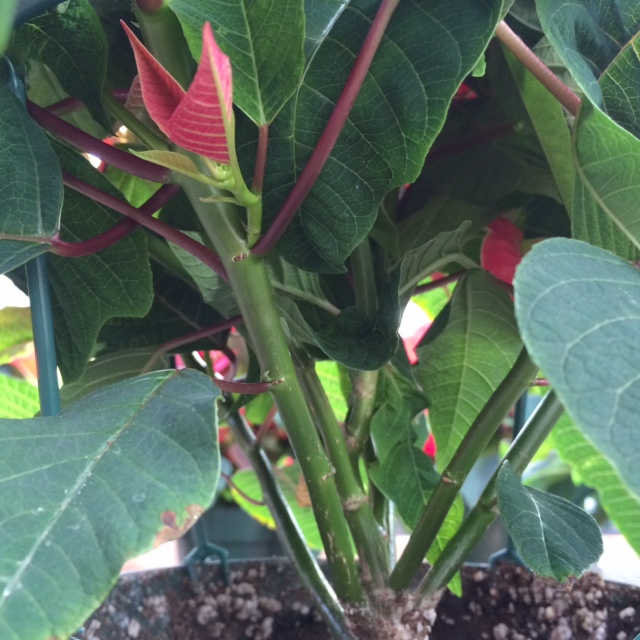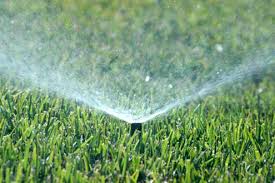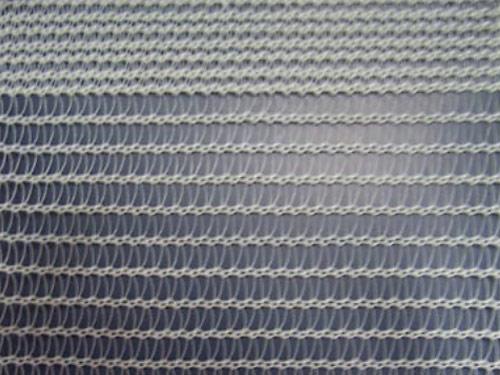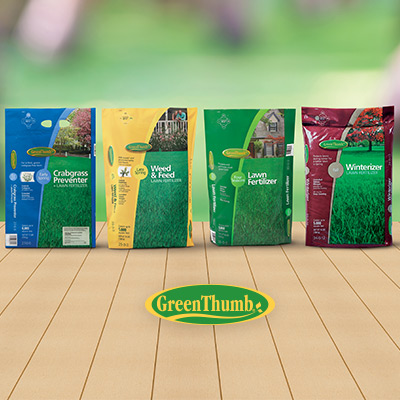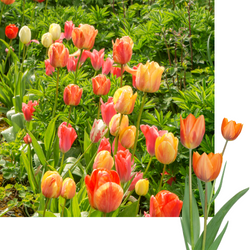
“April hath put a spirit of youth in everything.”
~ William Shakespeare
Flower Gardens
Watering plants that have been recently planted outdoors is tricky. The rule is to water them in thoroughly after they are planted. Then watch the area next to the edge of the original soil ball to see if it is getting dry. You want to encourage the roots to move out into the surrounding soil to get water without letting the original soil ball get too dry. Reduce the watering frequency with time, but water thoroughly each time you water. Don’t just wet the surface of the soil.
An easy way to harden plants that are going outdoors is to cover them with Plant & Seed Guard for a few days after you plant them. You can use wire supports if necessary to hold the fabric away from the plants. Attach it to the ground with wire staples. It’s re-usable.
Pot begonias and dahlias now and keep them indoors until later in May. This will give them a good head start and they will bloom earlier after putting them outside.
Plant gladioli, lilies, cannas, callas, ranunculus, crocosmia and other summer blooming bulbs toward the end of April. Plant pansies between the bulbs to give you early color.
Fertilize your spring-flowering bulbs after the blooms have gone with Gro Rich Rose & Perennial fertilizer. Wait until the leaves turn brown to remove them. The leaves help build strength in the bulbs for next year.
Place your plant supports into position early. If you wait until they really need support, it may be difficult as the plant will be too large. This is especially true for peonies.
When you hand water, use a nozzle with a shut-off or trigger nozzle that stops the flow of water when released so you don’t waste water.
Before transplanting, be sure that your plants are not dry.
Flowering annual starts which can be planted out in early April after “hardening them off” are alyssum, dusty miller, sweet peas, anchusa, larkspur, centaurea, pansies, dracaena, and snapdragons. When is it safe to plant other flowers?
Pinch back your annuals to promote stronger, bushier plants and more flower production.
More on Planting and Caring for Annuals
Perennials & Roses & Vines
If you have a fence you’d like to hide there are several plants you can use besides shrubs. Vines like trumpet vine, silver lace vine, wisteria, honeysuckle vine, Virginia creeper and climbing roses which are perennials can be used. Annual vines like sweet peas, morning glories, Scarlet runner beans are just a few good fence covers. Remember other tall plants like sunflower or hollyhocks.
Group flowers and vegetables with the same water needs together to take advantage of their lower water requirements.
When planning your flower bed, whether it is planted in annuals or perennials, don’t overlook ornamental grasses for a beautiful contrasting texture.
Spring is the best time to divide perennials that bloom in mid or late summer such as asters and chrysanthemums. Wait until September to divide early spring-flowering perennials like bleeding hearts and peonies.
Plant wildflower seeds in April. Improve your soil before planting by raking in either peat moss or compost or a combination of the two.
Add some spice to predictable bulb and perennial beds by broadcasting seeds of annuals like larkspur, cosmos, poppies, bachelor buttons or other annuals among your established plants.
More on Planting and Caring for Perennials and Roses
Trees & Shrubs
April is the best time to plant new trees and shrubs. Improve the soil first with compost and/or peat moss. Then apply MYKE Tree & Shrub Transplanter and water in with Root Stimulator, both of which reduce transplant shock and stimulate root growth.
When planting large trees, stake them for the first year. Use 2” wide staking straps around the tree. Do not use wire, twine or rope on the tree itself. Place the stakes 2-3 feet away from the tree, tie the strap to the stake and leave a little slack. Let the tree sway slightly to develop roots and caliper.
April is perfect time to take stock of the plants in your yard. Are there plants that have overgrown their spaces? Are some sickly and unattractive? Now is the time to pull them out and replace them with a new and vibrant plant. This is what garden renewal is about.
Cut back butterfly bushes, blue mist spireas, Russian sage and other late summer-blooming shrubs at this time.
If you didn’t get around to pruning your shrubs and trees in March, you can still do some pruning now, the earlier the better.
Start your fertilizing program for roses, trees and shrubs when the leaves appear on the branches.
Protect your ash trees from Emerald Ash Borers. Use Ferti-lome Tree and Shrub Systemic Insect Drench for easy-to-use systemic protection from insects all year long. Follow the label directions and just mix it with water in a watering can or bucket and pour the solution around the base of trees or shrubs.
Watch for distorted leaflets on honeylocust trees. Leafhoppers can damage this trees fine leaves. They can also damage lawns. A good insecticide can help eliminate these tiny pests.
If you don’t have room for two different fruit trees for cross pollination, try one of our 4-in-1 apple, pear or sweet cherry trees for a great crop of fruit. There are four different grafts on one tree.
Are you tired of raking up crabapples in the summer? Spray crabapple trees with Monterey Floral Growth Regulator at mid to full bloom. This will prevent the fruit from forming.
Check for borer holes in your shade, spruce and pine trees. Evidence of these borers will be small holes, possibly with evidence of sap and/or sawdust. Our plant doctors can recommend the proper treatment depending on the type of tree and borer.
Remove protective tree wrap from young trees around April 1. Check the trunk for any problems.
Remember the worms on the ash trees last year? Watch for them again this year and spray with Eight from Bonide.
Although annuals look beautiful planted around new trees, there is a danger of over-watering your trees while trying keep your flowers pretty.
There are several trees, shrubs, and flowers which will attract those all-important pollinators – the bees. Anyone with a fruit tree or a vegetable garden knows their importance. Stop by our Plant Doctor desk for a list of these plants. Remember to refrain from spraying insecticides while bees are present. Something to note: bumblebees are more effective pollinators than honeybees.
Deep-root waterers get water under the lawn which is useful for trees, shrubs and roses. Some of these tools also have a container for dissolving fertilizer pellets to feed your plants right at the roots.
Before transplanting, always make sure trees and shrubs are not dry to help avoid transplant stress.
Start treating your pine and spruce trees for insects like scale, tussock moth, Cooley spruce gall, pine tip moth, pitch mass borer, and ips beetle. Come in and we can recommend the appropriate preventive treatments.
Vegetable Gardens
It’s time to plant seeds of peas, turnips, carrots, beets, spinach, Swiss chard, lettuce, radishes. Plant garlic cloves, seed potatoes, dormant strawberry plants and onion sets.
Keep an N-sulate cover handy for unexpected frosts after your garden is planted. It will keep the frost off new seedlings as they emerge from the soil.
Mid-April is the time to set out broccoli, cabbage, cauliflower, kohlrabi, Swiss chard, radicchio, and Brussels sprouts plants. Be sure to “harden them off” first.
Enjoy an earlier growing season by four weeks by setting out Season Starter plant protectors in April. You can set tomatoes and pepper plants inside them ten days after initial setup of your Season Starter. The setup period allows the soil beneath the solar shelters to warm to a temperature suitable for plant growth.
Vegetable gardens benefit from watering at ground level, instead of watering overhead. Watering with soaker hoses helps to prevent many diseases and insects.
Remember to rotate your vegetable crop plantings each year. Plant each variety of vegetable in a different part of your garden than you did last year. This will minimize repeated problems with disease and insects.
Plant your fast growing crops in two-week intervals to prolong the availability of lettuce, spinach, peas, and radishes. When the weather gets too hot for these vegetables, plant some in the shade of taller plants, like pole beans and corn. This system is also good for gardeners with limited space.
By placing a floating row cover over your carrot, lettuce, and spinach seed, your seeds will germinate quicker, and the birds won’t make a meal of them. Floating row covers also eliminate cabbage loopers on cabbage, broccoli, cauliflower, and Brussels sprouts. Keep your cover handy in case there is a cold snap for any newly planted vegetables and flowers.
Use soaker hoses in your vegetable garden and flower beds. You can either lay the hose on top of the soil next to the plant or bury it to get water directly to the roots. Soaker hoses can also be used to water trees and shrubs.
Lawns
Early April is the best time to start fertilizing your lawn. By using a fertilizer with pre-emergent (weed and grass preventer), you will be able to eliminate a lot of annual grass and weed seeds by keeping them from germinating.
April is a good time to seed or overseed lawns. Use a good grass seed and apply New Lawn Starter fertilizer after the seed is sown. Keep the area moist even after germination. Do not apply a pre-emergent crabgrass control before or after seeding, as this will prevent grass seed germination.
Core aerate your lawn before fertilizing this month. Not only does this help the lawn’s vigor and health, it also reduces maintenance and water usage. Be sure your lawn is well watered a day or two before aeration.
Keep your mower blade sharp. Dull blades can invite lawn diseases to enter grass blades. Bring your rotary mower blades into Echter’s for sharpening. You can bring them in on or off the mower.
Use a rain gauge to measure the amount of water you are putting on your lawn. Apply 3/4” to 1” slowly enough to evenly soak the lawn without running off the area.
Inspect your irrigation system regularly. Be sure sprinkler heads are not plugged and are properly adjusted for the radius and the level of spray needed. As surrounding plants grow, you will need to modify your system. Especially check for leaks in the sprinkler lines.
Houseplants
On a nice warm day, take your houseplants outside and give them a shower, or use your bathroom shower. The plants will appreciate a good cleaning after being inside all winter.
Birds
It’s spring cleaning season even for birds. If you haven’t cleaned your bird houses this year, clean them out and then spray them with a bird feeder cleaner before the new birds arrive.
Continue feeding the birds at your feeders. Seed-producing plants are just beginning to grow and there are now more birds competing for the depleted wild seed supply. Give them a supply of water also.
More on Feeding Birds in Colorado
